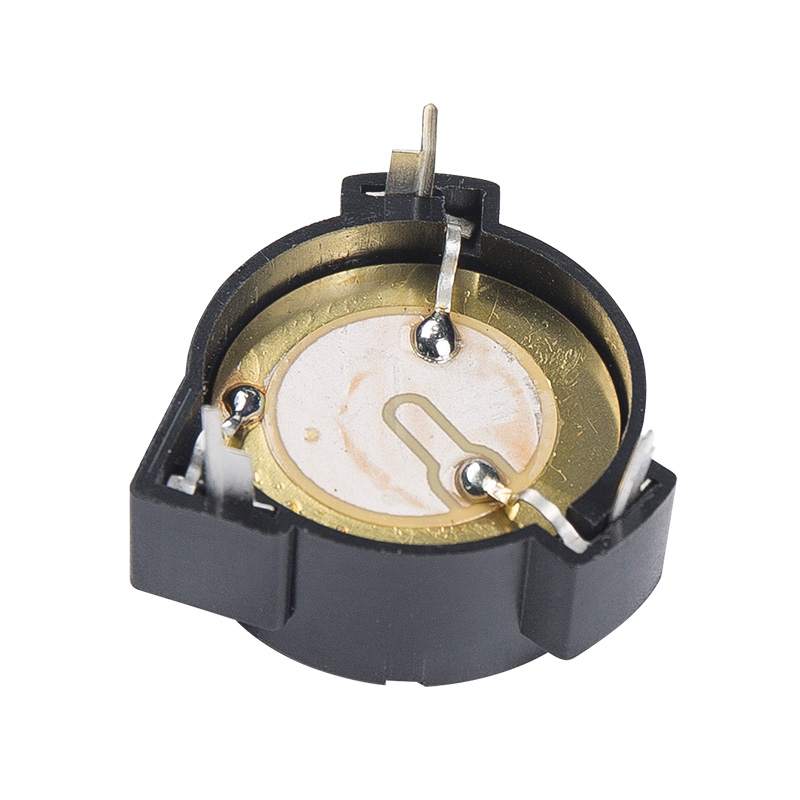As compact electronic systems become increasingly prevalent—from wearable devices to industrial automation panels—the demand for reliable, space-efficient sound signaling components has surged. Among the available solutions, the piezoelectric buzzer, or piezo buzzer, stands out not only for its size and simplicity but also for its performance in a wide range of operating environments. Yet, what exactly gives piezo buzzers an edge over traditional electromagnetic sounders, and how do their operating principles impact their behavior in real-world applications?
At the core of a piezo buzzer lies the piezoelectric effect, a property of certain crystalline materials that generate mechanical vibration when subjected to an alternating voltage. This mechanical oscillation causes a diaphragm, usually made of metal or ceramic, to flex and emit sound. Unlike electromagnetic buzzers, which rely on the movement of a magnetic coil and diaphragm assembly, piezo buzzers have no internal coils or magnetic components. This fundamental difference in design leads to several unique performance characteristics.
One of the primary advantages of a piezo buzzer is power efficiency. Because it operates using the deformation of a piezoelectric element rather than mechanical motion induced by a magnetic field, the energy conversion process is highly efficient. Piezo buzzers typically consume much lower current, making them ideal for battery-powered devices, such as smoke detectors, medical instruments, and portable alarms. Their low power draw not only extends battery life but also allows for extended signaling durations without overheating.
Additionally, piezo buzzers are known for their wide frequency response and the ability to produce sharp, penetrating tones, often in the 2 kHz to 4 kHz range—frequencies to which the human ear is particularly sensitive. This makes them highly effective for alert and alarm systems where audibility and urgency are critical. Unlike electromagnetic buzzers that may produce lower-pitched tones or require amplification circuits to match performance, piezo buzzers can deliver attention-grabbing sounds with minimal circuit complexity.
The mechanical simplicity of piezo buzzers also contributes to their robustness. With no coils, moving magnets, or friction-based parts, piezo buzzers are less prone to mechanical wear, offer greater longevity, and can function reliably across a wide temperature range. Furthermore, their compact and lightweight design makes them ideal for integration into miniaturized electronics or high-density PCBs.

From a design perspective, piezo buzzers are available in active and passive variants. Active buzzers include an internal oscillator and can produce sound when a DC voltage is applied, while passive buzzers require an external driving signal. This gives engineers flexibility in circuit design—whether they prefer the simplicity of a plug-and-play active buzzer or the customizability of a passive one.
In industrial and automotive applications, piezo buzzers are frequently chosen for their resistance to electromagnetic interference (EMI). The absence of magnetic fields in their operation helps maintain signal integrity in environments with high electrical noise. This EMI immunity is essential in medical equipment, aerospace electronics, and precision instruments where signal stability is non-negotiable.
Despite these advantages, piezo buzzers are not without limitations. Their sound output is highly directional, and the tonal quality may not be as rich or modulated as that of more complex audio systems. However, when used as an alert mechanism, the priority is not musicality but clarity, reliability, and efficiency—and in those domains, piezo buzzers continue to deliver measurable value.
To conclude, the piezo buzzer’s combination of low power consumption, durability, compact design, and effective sound output makes it a preferred solution for modern electronic signaling needs. As devices continue to shrink in size while expanding in function, the piezo buzzer remains a critical component that meets both performance and design constraints without compromise.


 EN
EN  English
English Deutsch
Deutsch 中文简体
中文简体
